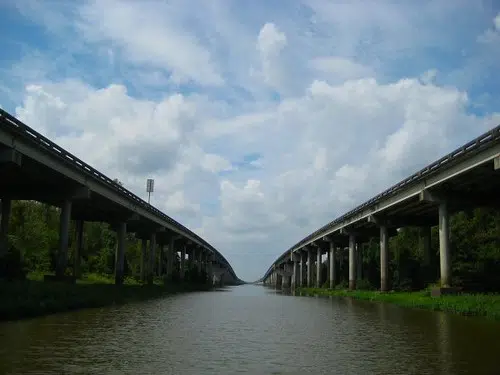The state’s first Safety Corridor continues to phase in measures to reduce speeding and accidents on the Atchafalaya Basin Bridge. DOTD spokesperson Rodney Mallet said the first phase of Act 426 called for increased signage along the 18-mile-long bridge.
“To let people know that this was a Safety Corridor and that fines were going to double. So, what happens next is by the end of this year we’re going to put up some feedback cameras,” said Mallett.
A feedback camera is a digital sign that tells drivers how fast they are traveling. But the speeding cameras won’t be installed until the end of next year. DOTD is in the process of hiring a company to monitor speed cameras and issue citations. Mallett said it’s the speed differential of vehicles, anywhere from ten miles an hour or more over 60 miles an hour that increases the chances of an accident on the narrow bridge.
“If we can kind of get a hold of that speed differential and have everybody driving about 60 mph then that’s going to reduce the number of crashes,” said Mallett.
The I-10 bridge between Lafayette and Baton Rouge is highly traveled and Mallett said even a small accident on the Atchafalaya Basin Bridge can cause major repercussions.
“A crash on that bridge can close down that bridge and mess up traffic for hours and hours because it’s 18 miles and it’s over water,” said Mallett.
And while DOTD is not over enforcement, Mallett said since the double speeding fine signs were installed in August they have not seen any major accidents or delays on the bridge.








Comments